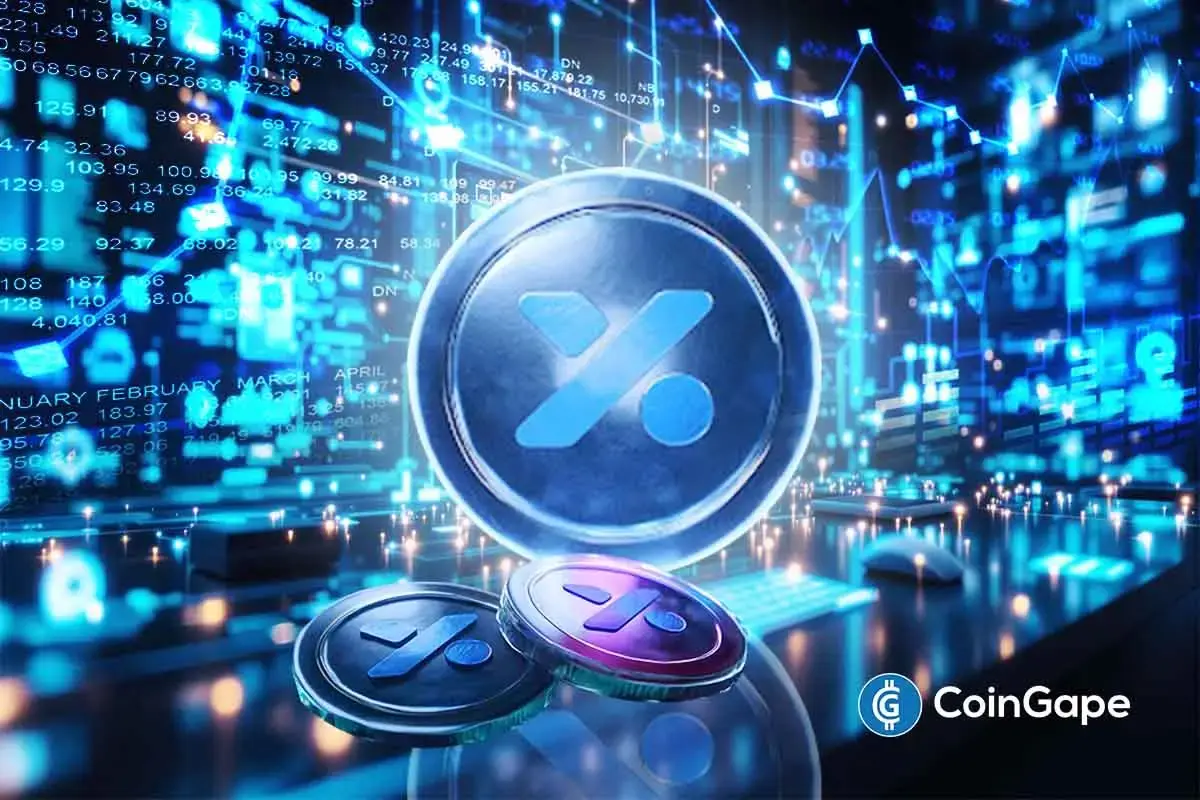Hedera Price Swings Push Investors Toward XRP Tundra’s Steady Staking Model

Hedera’s momentum has broken down as the broader market turns defensive. Bitcoin’s dip below $90,000 has accelerated weakness among large-cap altcoins, and Hedera is among those showing the strongest signs of fatigue.
After weeks of failing to reclaim resistance, HBAR is now testing a critical support zone, drawing attention from traders concerned about further downside.
According to CoinMarketCap, Hedera’s price is sitting directly on its $0.1282 support, and a sustained failure to regain momentum could expose the token to an additional 20% decline if the market retraces.
Enterprise-oriented announcements and ecosystem updates have not created the buying pressure needed to counteract the overall market pullback, leaving HBAR vulnerable at a moment when capital is rotating aggressively toward yield-bearing assets.
Investors Are Moving Away From Volatile Altcoins
Hedera’s recent stall comes from several converging pressures. Institutional flows have shifted toward networks perceived as more regulatory-friendly, especially as compliance frameworks tighten across the US and Europe.
Product launches and enterprise partnerships have generated attention but not sustained accumulation, and in a market defined by risk-off sentiment, tokens reliant on corporate narratives are struggling to attract new inflows.
The contrast between Hedera’s uncertain trajectory and the predictability of revenue-backed staking systems has influenced investor behavior.
Staking ecosystems offering consistent returns have seen renewed interest, particularly those providing transparent, non-inflationary yield sources rather than speculative upside alone.
XRP Tundra: The Preferred Alternative for Yield Stability
This shift in market behavior has coincided with one of the most significant developments in XRP Tundra’s timeline: a major institution has begun acquiring the project, accelerating its launch to December 15 and opening a final 48-hour retail window at $0.01 before institutional pricing replaces public access entirely.
The timing places XRP Tundra at the center of the conversation for Hedera holders seeking stability and predictable yield.
Tundra’s model differs fundamentally from typical staking systems. The platform is well-positioned to become the first true native DeFi layer for the entire XRP Ledger ecosystem, aligning with the broader expectation that the XRPL will enter its strongest growth cycle in early 2026.
In that scenario, the XRP community — millions strong and consistently underserved by DeFi infrastructure — gains a unified system that finally offers sustainable, high-yield staking, governance tools, and cross-chain execution.
The Tundra-S token on Solana powers the execution layer, while Tundra-X on the XRPL anchors governance and reserves. Together, they form a flywheel that institutions are already positioning around, and their involvement is the reason the December 15 launch was pulled forward.
Revenue-Backed Yield: The Key Differentiator Investors Are Seeking
What draws investors migrating from HBAR is not speculation but structure. XRP Tundra’s Cryo Vaults deliver 8–20% APY, and the yields do not rely on token inflation of any kind.
Both TUNDRA-S and TUNDRA-X have hard-capped supplies, and all staking rewards are sourced from actual protocol revenue.
In narrative form, yield originates from transaction and protocol fees across the entire Tundra ecosystem, including swaps, lending, derivatives, and future GlacierChain activity.
Frost Key NFTs contribute additional capital that flows directly into the revenue pool, and part of all ecosystem fees is used to market-buy and permanently lock TUNDRA-X into the treasury.
Nothing is minted to pay rewards. Nothing is diluted. Everything is accounted for on-chain through a transparent revenue dashboard. It is the same model that underpins blue-chip protocols such as GMX, but applied natively for XRP holders for the first time.
This makes the upcoming $0.01 allocation structurally significant. Once it closes, governance access via TUNDRA-X, early staking rights, and low-cost exposure to TUNDRA-S transition fully into institutional channels — a shift explained in detail by Token Galaxy in his recent coverage.
A Launch Architecture Designed for Institutional Stability
Institutional support has also been tied to the project’s verification stack. XRP Tundra is fully audited by Cyberscope, SolidProof, and FreshCoins, and the team is KYC-verified through Vital Block. All smart contracts are open-source, immutably locked, and free of mint functions or administrative control.
Liquidity protection is handled through Meteora’s DAMM V2 system, which uses dynamic fee structures, concentrated liquidity, and NFT-based LP positions to stabilize early trading conditions and reduce volatility during the launch window.
This infrastructure replaces the uncontrolled early price swings that typically define new tokens, creating the consistency that institutional liquidity providers require.
Final 48 Hours: A Stability-Centric Option as Market Volatility Rises
As Hedera flirts with breakdown levels and macro sentiment cools, yield-seeking investors are gravitating toward systems offering predictable, verifiable returns. XRP Tundra fits that demand precisely.
With its December 15 launch confirmed, institutional pricing imminent, and the last $0.01 allocation nearly exhausted, the distinction between speculative altcoin exposure and revenue-backed staking has become stark.
Review the final allocation terms, staking architecture, and launch details here:
Buy Tundra Now: official XRP Tundra website
How to Buy Tundra: step-by-step guide
Security and Trust: Cyberscope audit
Join the Community: X/Twitter
Recent Posts
- sponsored
AI Cloud Mining – How Long-Term Crypto Traders are Positioning for Passive Income
In 2019, GSAE became the first AI cloud mining service provider to be legally registered…
- sponsored
While Wall Street Keeps a Close Eye on Bitcoin, Savvy Investors are Earning Stable Daily Returns Through LeanHash
While Wall Street focuses on Bitcoin price movements, ETF fund flows, and macroeconomic policy changes,…
- sponsored
CLS Mining: A Regulated Cloud Mining Application that Supports Multiple Currencies and Passive Income Models
While Bitcoin is still trying to reclaim its glory days, many people have pivoted to…
- sponsored
Momentum Builds for USE.com Presale Ahead of the Beta Launch
USE.com has entered its next stage of growth, and it is already gaining international momentum.…
- sponsored
USE.com – A Global Alternative to Major Crypto Exchanges
The global cryptocurrency exchange landscape is more competitive than ever. Yet many traders feel the…
- sponsored
XRPstaking Unveils Daily Yield Plan to Support Investors in Volatile Markets
Amidst the recent volatility in the crypto market, XRP has emerged as one of the…